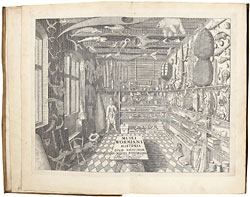 Ian McKay’s weekly column in Antiques Trade Gazette has been running for more than 30 years.
Ian McKay’s weekly column in Antiques Trade Gazette has been running for more than 30 years. Under the Sun
Laying Out the Courses
Charles Blair Macdonald, National Golf Links of America, $9,600, and Dr. Alister Mackenzie & L. A. & P. J. A. Berckmans, Description of the “Bobby Jones” Golf Course… $6,000, both at PBA Galleries of San Francisco on August 25.
Golf books are nowadays not quite so easy to sell at high sums as was once the case, and this latest sale held by the leading players in the field, had its disappointments.
However, there are always lots that do better than expected and the Scottish born golf course designer, Charles Blair Macdonald, provided one of them. Doubly signed and doubling the low estimate before selling was one of one hundred copies of National Golf Links of America that were privately printed c. 1912 for the ‘Founders’ during the early stages of Macdonald’s design of this revolutionary and prestigious, links-style golf course at Long Island. The key factor here was that this was the first time PBA had ever offered a copy for sale.
An exceptionally fine copy of Dr. Alister Mackenzie’s classic Golf Architecture, published in London in 1920 and a book which PBA has sold for as much as $6,500 (in 2008) was disappointing on this occasion at $2,400, but there was a much higher than expected bid on Description of the “Bobby Jones” Golf Course [with an] Historical Sketch of the “Fruitlands.”
This short history and hole-by-hole description of what was to become the Augusta National Golf Club was privately printed in Augusta, c. 1934, and, still in the original and now laminated wrappers, it retains the course map. On the other side of the map are shown motor routes to Augusta.
Worm’s Wunderkammer
Olaus Worm, Museum Wormianum, £3,875 ($6,190) at Lyon & Turnbull of Edinburgh on September 7.
Published by Elzevir in Leiden and Amsterdam in 1655, shortly after the author’s death, this is an illustrated catalogue of the most famous Scandinavian Wunderkammer, or collection of natural and man-made curiosities. Ole, or Olaus Worm (1588-1654), was a distinguished professor of medicine at Copenhagen, but he had earlier published the earliest accounts of the rune stones of Denmark and Norway.
Worm was familiar with other Wunderkammern of his age, and is known to have visited that of Ferrante Imperato of Naples in 1609, to have seen Bernardus Paludanus’ collection at Enkhuizen in the following year, and in 1611 traveled to Kassel to the Kunstkammer of Moritz the Learned. In turn, his own collection received its fair share of visitors and became one of the Stockholm’s major attractions.
It was divided in traditional manner into natural and artificial objects. The larger specimens on the higher shelves are mixed in with bronzes and antiquities, while horns, antlers, and stuffed animals hang on the wall, and from the ceiling are suspended large fish, a rather small polar bear, and even a Greenland kayak.
The Edinburgh copy, its period vellum binding now splitting at the hinges but internally clean and bright, was mis-catalogued as lacking the portrait, but at least two bidders spotted that it was indeed present, along with the double-page title engraving, 139 woodcuts, and thirteen text engravings.
In 2008 the Macclesfield Library copy of Worm’s Museum in an English blind stamped calf binding of the period, and with the portrait and title-frontispiece both present but detached sold at £6,875 (then $12,170) at Sotheby’s, and in 2001, an ex-Hopetoun Library copy, in contemporary calf, had sold at $11,400 as part of Joseph Freilich’s scientific library at Sotheby’s New York.
After Worm’s death the museum was purchased by Frederick III of Denmark and transferred to Copenhagen Castle, later being absorbed in to the Danish Royal Kunstkammer. Before it moved, Worm’s son, William, had prepared this catalogue for publication.









